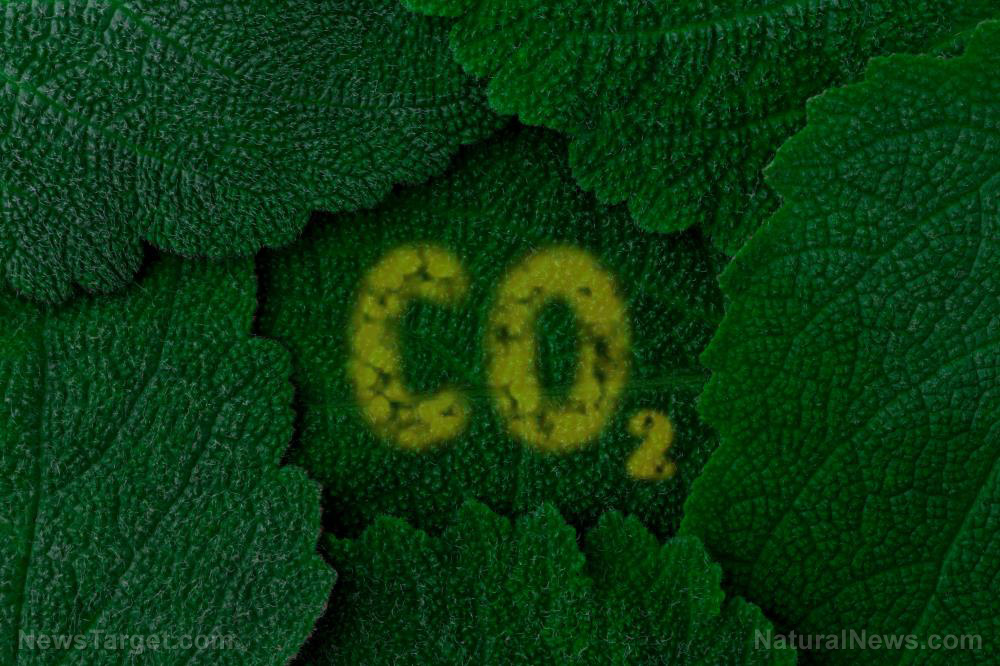Scientists now looking at transparent nanolayers for increased solar power production
12/14/2021 / By Ramon Tomey

A team led by researchers from the Forschungszentrum Jülich (FZ Jülich) research center in Germany has developed a unique kind of solar cell that uses transparent nanolayers to produce more electricity than conventional solar cells. Their solar cell makes use of a sophisticated design and a nanostructured transparent material for the solar cell’s topmost layer.
Solar power is one of many ways to generate renewable energy. Current systems utilizing crystalline silicon technology, which take up around 95 percent of the global market, boast a 23 percent efficiency rate. But improving the efficiency of solar power generation could help slash the cost of solar even further.
Current solar cell technology has limits
Silicon solar cell technology has improved over the decades, but one problem still remains. Negative and positive charge carriers produced in the cell after it absorbs sunlight cancel each other out before they can be utilized. But materials that exhibit a special property called passivation reduce the possibility of these charges canceling each other out.
Study author Malte Köhler touted the advantage of the revolutionary solar cell they created. “Our nanostructured layers offer precisely this desired passivation,” he said, adding that the ultra-thin, transparent layers permit increased light absorption and high electrical conductivity.
FZ Jülich research team head Dr. Kaining Ding further elaborated: “No other approach so far combines these three properties – passivation, transparency [and] conductivity – as well as our new design.”
Ding and his team used processes in manufacturing that can be integrated relatively quickly into series production, which he emphasized as an advantage over other approaches. The utilization of such production methods facilitates the large-scale transition of the new solar cells from a laboratory setting.
To create the transparent nanolayer cell, the researchers deposited two layers of pyramid-shaped silicon carbide nanocrystals – applied at two different temperatures – on a thin layer of silicon dioxide. They then coated the film with a transparent layer of indium tin oxide.
The first prototype of the FZ Jülich solar cell initially achieved a 23.99 percent efficiency rate in laboratory tests, putting it slightly below the best crystalline silicon solar cells produced in a laboratory. However, parallel simulations showed higher efficiency rates of 26 percent or higher for the transparent nanolayer solar cell.
Solar technologies are improving with each new discovery
The transparent nanolayer solar cell technology developed by FZ Jülich researchers and their colleagues are just one of many improvements to solar energy systems. Earlier endeavors by scientists aimed to improve the way solar cells collect sunlight, which can then be converted to usable electricity.
Back in August 2018, materials scientists from the University of California Los Angeles‘s Samueli School of Engineering developed a new kind of thin-film solar cell that generates more energy from sunlight. The highly efficient solar cell makes use of a double-layer design for better performance compared to conventional solar panels.
To create the solar cell, scientists sprayed a thin layer of perovskite on top of a commercially available solar cell. Perovskite is an inexpensive compound made of lead and iodine, and has been found to be very efficient at capturing energy from sunlight. For the bottom layer, scientists created a compound by mixing copper, indium, gallium and selenide (CIGS). (Related: Solar cell breakthrough could DOUBLE energy capture efficiency to over 40 percent.)
Production of the double-layer solar cell is easy, according to UCLA materials science professor and lead researcher Yang Yang. He remarked that the process of spraying the perovskite layer on existing solar panels can be incorporated into production lines with no difficulty.
Based on independent tests conducted at the U.S. Department of Energy‘s National Renewable Energy Laboratory, the perovskite-CIGS solar cell registered a 22.4 percent efficiency rate. This efficiency rate is comparable to the currently poly-silicon solar cells currently prevalent in the solar energy market. Furthermore, the efficiency rate of the UCLA scientists’ solar panel is more than double the efficiency of a previous perovskite-CIGS solar cell – setting a new record. The earlier record set in 2015 by a group of researchers from the Thomas J. Watson research center only set a 10.9 percent efficiency rate.
Yang remarked: “With our tandem solar cell design, we’re drawing energy from two distinct parts of the solar spectrum over the same device area. This increases the amount of energy generated from sunlight, compared to the CIGS layer alone.” He added that the technology they developed “boosted the existing CIGS solar cell performance by nearly 20 percent” – translating to “a 20 percent reduction in energy costs.” (Related: Energy Department announces ten-year plan to reduce solar energy cost by 60 percent.)
Visit SolarTechReview.com to read more about new discoveries in the field of solar power.
Sources include:
Tagged Under: breakthrough, discoveries, electricity, future science, future tech, innovations, inventions, nanocrystals, power, power grid, renewable energy, research, solar cells, solar energy, solar tech
RECENT NEWS & ARTICLES
COPYRIGHT © 2017 FUTURE SCIENCE NEWS




















